Looking to take on the ultimate travel adventure? Polar expedition cruises are about as epic as it gets. Picture yourself gliding through pristine waters where massive icebergs float by and wildlife roams freely in its natural habitat.
Whether you’re drawn to the midnight sun in the Arctic or the otherworldly landscapes of Antarctica, these aren’t just regular cruises with nice views – they’re life-changing experiences that’ll shift how you see our planet’s most remote corners.
But before you start loading up on winter gear, there are some key things to think about for your polar adventure. You’ll also find more about polar cruise travel tips here.
🐧 Polar Cruise Enquiry 🐻❄️
Our team of polar travel specialists have personally explored both the Arctic and Antarctic regions – from tracking polar bears in Svalbard to kayaking with penguins off the Antarctic Peninsula. Let us find the right polar expedition cruise for you.
Key Takeaways
- Polar expedition cruises operate in Arctic (June-September) and Antarctic (November-March) regions with specialised ice-strengthened vessels carrying 50-200 passengers.
- Arctic cruises explore Svalbard, Iceland, Greenland, and the Northwest Passage, whilst Antarctic voyages visit the Peninsula, South Georgia, and Ross Sea.
- Expert naturalists lead daily activities including Zodiac landings, hiking, and wildlife viewing of polar bears, penguins, whales, and seabirds.
- Costs range from £6,500 to £24,000, including accommodation, meals, excursions, and onboard lectures with early booking discounts available.
- Travellers must follow strict environmental regulations and prepare with proper gear, medical clearance, and polar-specific travel insurance.
Introduction to Polar Expedition Cruises
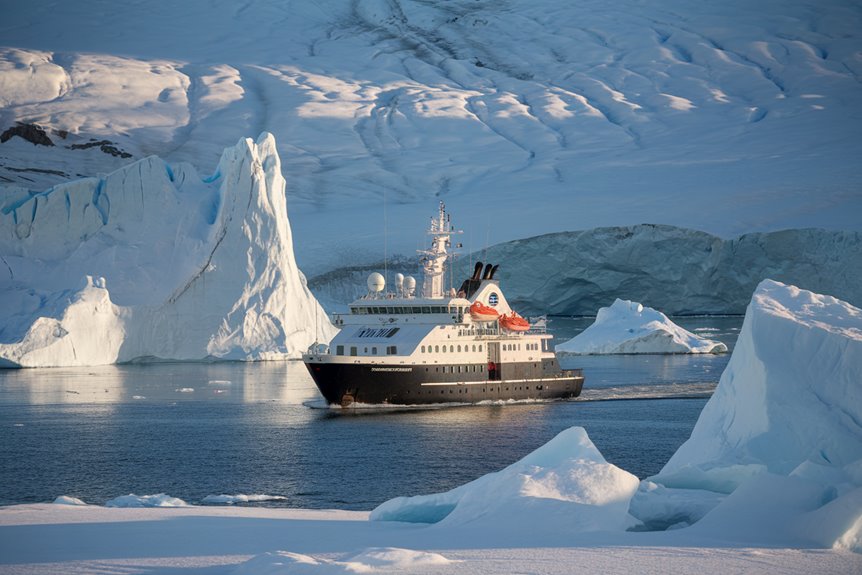
Exploration seekers are increasingly drawn to polar expedition cruises, which offer unique voyages to the Arctic and Antarctic regions. These specialised journeys take you to Earth’s most remote destinations aboard ice-strengthened vessels designed to navigate polar waters.
You’ll witness pristine landscapes, massive glaciers, and diverse wildlife in their natural habitats.
Unlike traditional cruises, polar expeditions focus on education and exploration. You’ll join expert naturalists, historians, and scientists who share their knowledge through presentations and guided excursions.
The ships are smaller, typically carrying 50-200 passengers, allowing for more intimate encounters and flexible itineraries. Weather and ice conditions often dictate your daily activities, which may include Zodiac landings, hiking on ice sheets, kayaking among icebergs, or observing polar bears, penguins, and whales.
Arctic Cruise Destinations
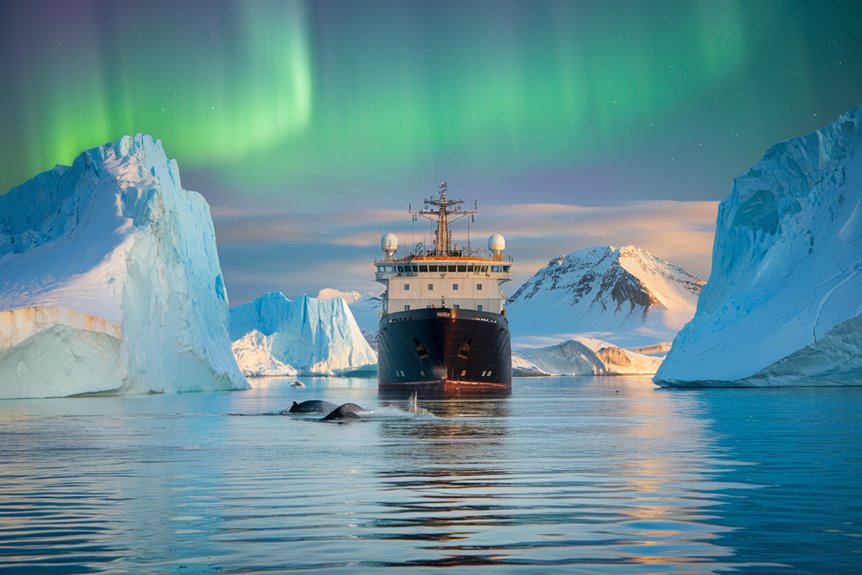
While the Antarctic offers stunning polar views, an Arctic cruise destination gives you access to incredible spots across several countries and territories.
You’ll find pristine fjords and glaciers in Svalbard, Norway’s remote archipelago where polar bears roam freely. Iceland’s dramatic coastline presents volcanic landscapes and geothermal features, while Greenland‘s massive ice sheet and traditional Inuit settlements provide unique cultural encounters.
The Russian Arctic beckons with the remote Franz Josef Land archipelago and its abundant wildlife, including walruses and seabirds.
Canada’s Northwest Passage lets you trace historic expedition routes through the Canadian Arctic Archipelago, where you can visit isolated Inuit communities and spot narwhals.
The North Pole itself is accessible via powerful icebreaker ships, granting you the rare chance to stand at 90 degrees North.
Antarctic Cruise Destinations
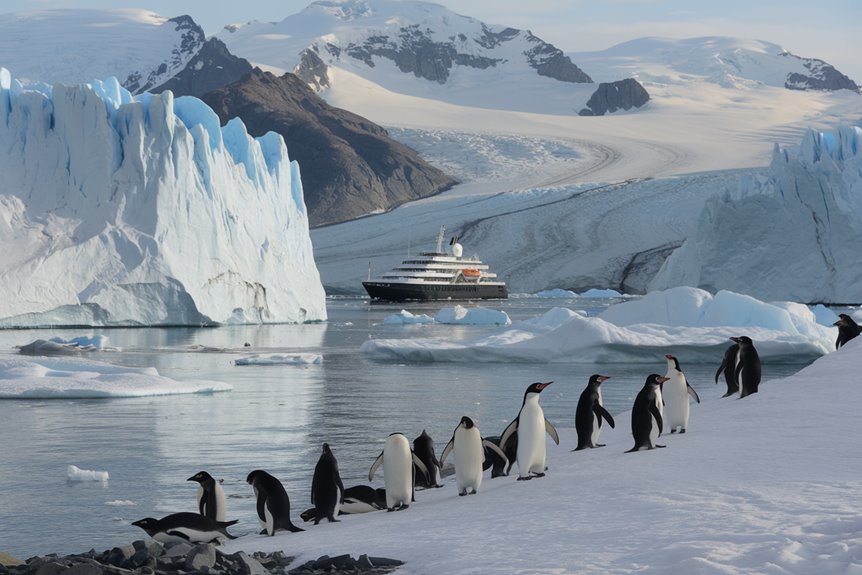
Antarctic cruise routes typically focus on the Antarctic Peninsula, which extends northward towards South America and presents the continent’s most accessible waters.
You’ll sail through the Drake Passage from Ushuaia, Argentina, visiting key locations like Paradise Harbour, Neko Harbour, and Port Lockroy.
Most itineraries include stops at the South Shetland Islands, where you’ll find large penguin colonies on Deception Island and Half Moon Island.
If you choose an extended voyage, you can visit South Georgia Island, known for its massive king penguin rookeries and historical sites from the heroic age of exploration.
The Ross Sea region, though less frequently visited, provides views of the Ross Ice Shelf and access to historic expedition huts from Scott and Shackleton’s expeditions.
Wildlife Encounters in Polar Regions
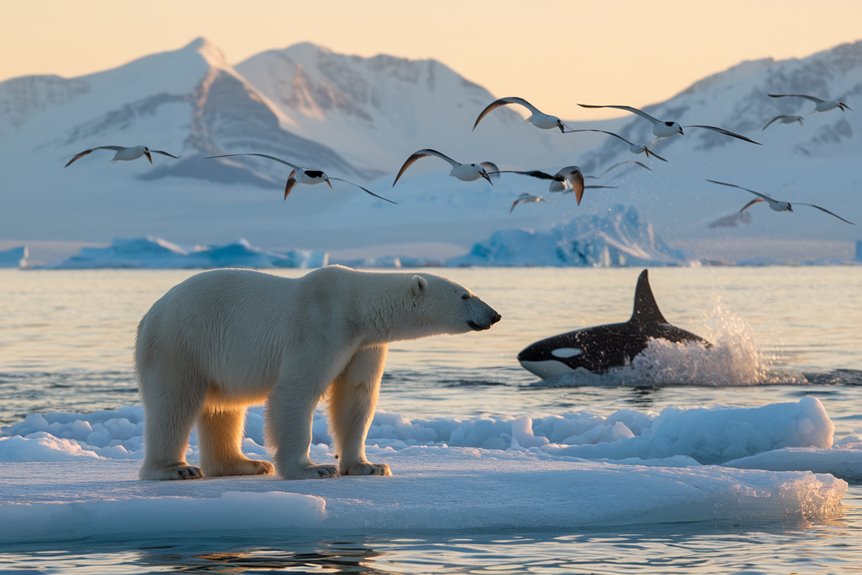
Polar regions provide extraordinary wildlife viewing opportunities that you won’t find anywhere else on Earth.
You’ll spot various penguin species in Antarctica, including emperors, gentoos, and adelies, whilst the Arctic hosts polar bears, arctic foxes, and walruses.
Both regions teem with whales – orcas, humpbacks, and belugas frequently surface near expedition ships.
You’ll encounter seabirds soaring overhead, including albatrosses in the Southern Ocean and arctic terns in the north.
Seals are abundant in both poles – leopard and crabeater seals in Antarctica, whilst ringed and bearded seals inhabit Arctic waters.
During summer months, you can observe diverse breeding colonies where thousands of animals gather on beaches and ice floes, presenting prime photography opportunities.
Choosing the Right Polar Expedition Cruise
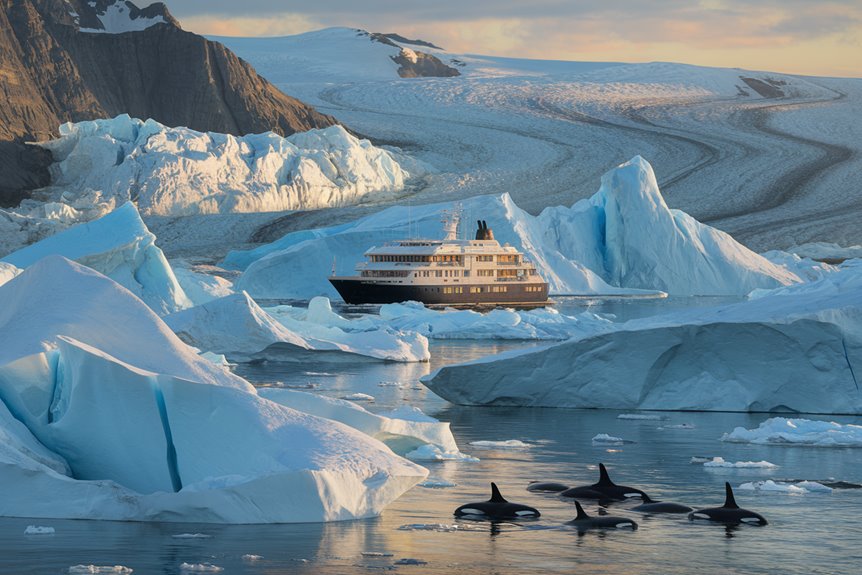
These remarkable wildlife encounters are best experienced by selecting the right expedition cruise for your interests and capabilities. At About2Cruise we can help you figure out which is the best polar cruise to suit you, just fill in our polar cruise enquiry form and we’ll get right back to you.
You’ll need to evaluate the ship size, as smaller vessels can navigate narrower channels and offer more intimate interactions but may have limited amenities.
Choose between Arctic or Antarctic itineraries based on specific wildlife you want to see – polar bears are exclusively Arctic, whilst penguins are Antarctic.
Reflect on the season carefully, as this affects both wildlife viewing opportunities and weather conditions.
Summer months offer midnight sun and peak wildlife activity.
You’ll also want to assess the expedition team’s expertise, the ship’s ice class rating, and included activities like kayaking or hiking.
Don’t forget to check passenger capacity, as this impacts your shore landing frequency and overall interaction.
Life Onboard a Polar Expedition Ship
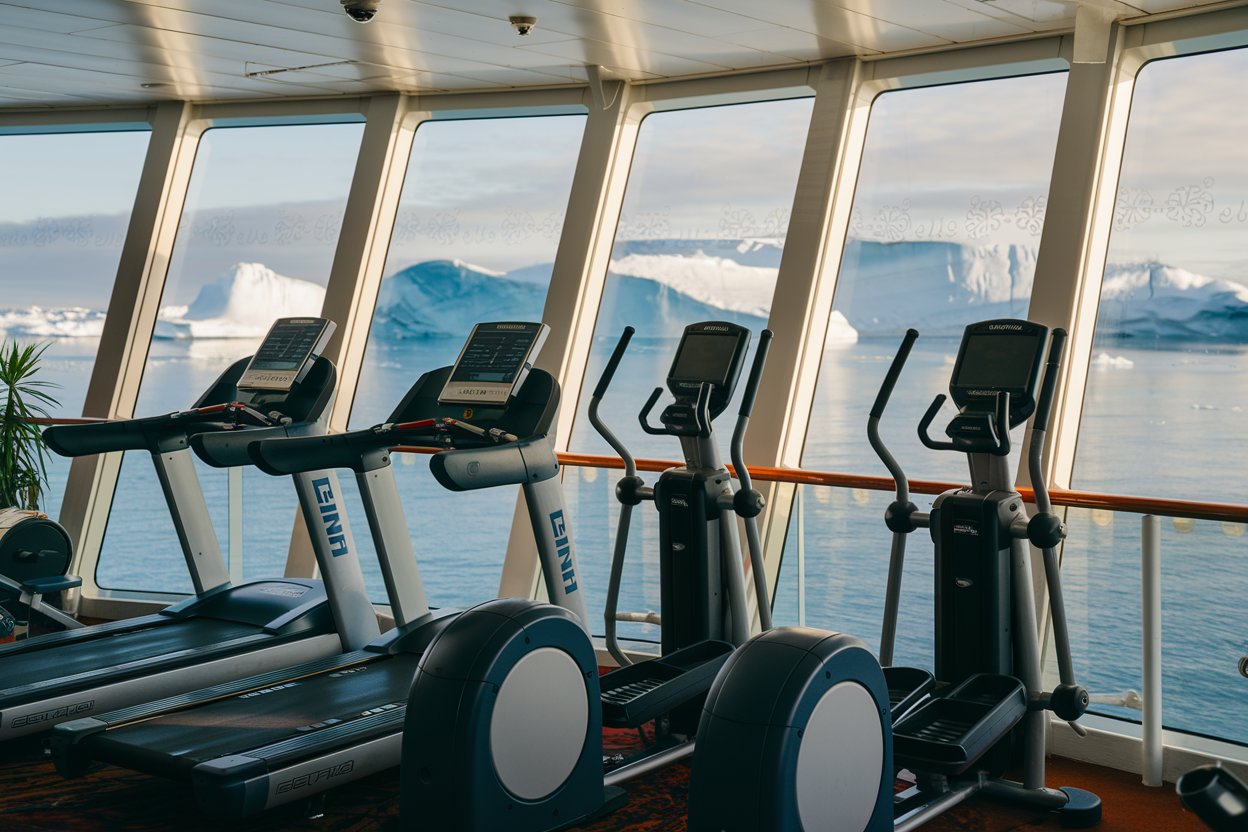
Life onboard an expedition cruise ship is a mix of comfort and adventure, with plenty of activities and time to relax.
You’ll find yourself adapting to a structured routine that maximises your polar adventure while making sure you rest between excursions.
Your typical day includes:
- Morning briefings and wildlife viewing from the observation deck, where you’ll spot seals, whales, and seabirds.
- Zodiac excursions or landings for up-close encounters with wildlife and pristine landscapes.
- Evening lectures by marine biologists, historians, and glaciologists who share insights about the polar regions.
Between activities, you’ll enjoy chef-prepared meals in the dining room, relax in the library, or edit photos in your cabin.
The ship’s bridge remains open for visits, allowing you to watch the navigation team at work while cruising through ice-filled waters.
Excursions and Activities
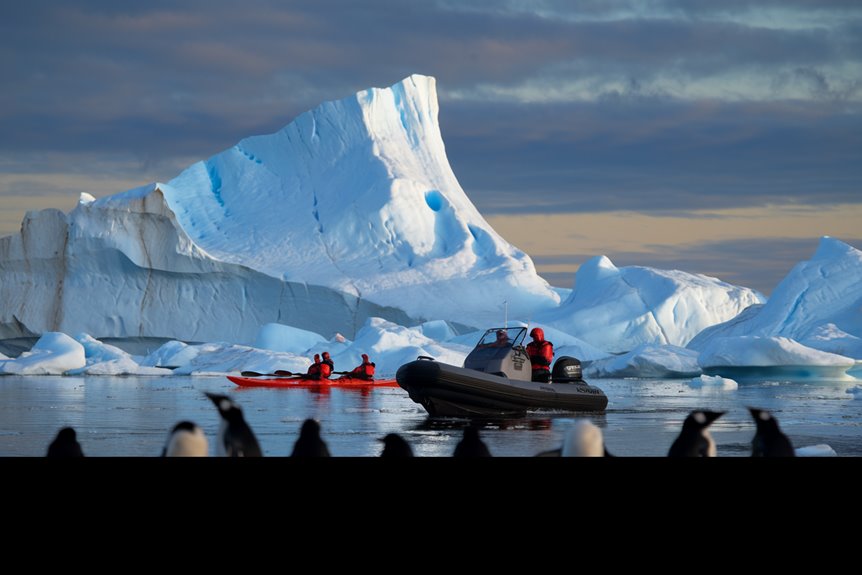
Ranging from adrenaline-pumping escapades to peaceful nature encounters, expedition activities let you undergo the polar regions up close.
You’ll explore ice-filled fjords by Zodiac boats, kayak between icebergs, and trek across pristine tundra. Expert guides lead you on wildlife viewing excursions where you’ll spot polar bears, penguins, seals, and whales in their natural habitat.
You can participate in photography workshops, join citizen science projects, or try polar snorkelling and camping.
Each day brings new opportunities: snowshoeing through untouched landscapes, climbing volcanic beaches, or visiting research stations. Most ships offer hiking options for different fitness levels, and you’ll always have the chance to stand on continental Antarctica or drift past towering Arctic glaciers.
All activities depend on weather conditions and your chosen itinerary.
Preparing for Your Polar Expedition

A successful polar expedition requires careful planning and preparation months before departure.
You’ll need appropriate clothing, essential gear, and the right mindset to handle extreme conditions. Begin by securing proper medical clearance and travel insurance that covers polar regions.
When packing for your expedition, focus on these vital items:
- Multiple insulating layers including thermal base layers, fleece mid-layers, and a waterproof outer shell
- High-quality accessories like waterproof gloves, polarised sunglasses, and insulated boots rated for extreme cold
- Photography equipment protected for cold weather, extra batteries, and memory cards
You’ll also need to build your physical stamina before the trip.
Regular cardiovascular exercise and strength training will help you manage shipboard activities and shore excursions in challenging polar conditions.
Environmental Responsibility and Regulations
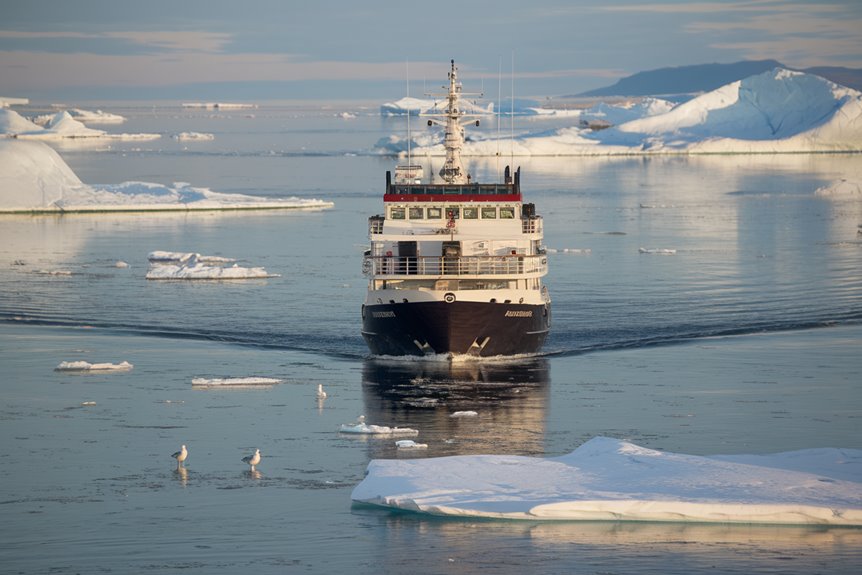
Travelling up into the pristine polar regions comes with strict environmental responsibilities and regulations that all expedition vessels must follow.
You’ll need to comply with IAATO or AECO guidelines, which protect wildlife and preserve these delicate ecosystems. These rules include maintaining specific distances from wildlife, proper waste management, and restrictions on what you can bring ashore.
You can’t remove anything from the polar regions – no rocks, plants, or other souvenirs.
When you go ashore, you’ll need to clean and disinfect your boots to prevent non-native species introduction. Your ship must also use marine gas oil instead of heavy fuel oil in the Arctic and follow strict protocols for waste disposal.
Remember that these regulations guarantee these pristine environments remain protected for future generations.
Polar Expedition Cruise Lines
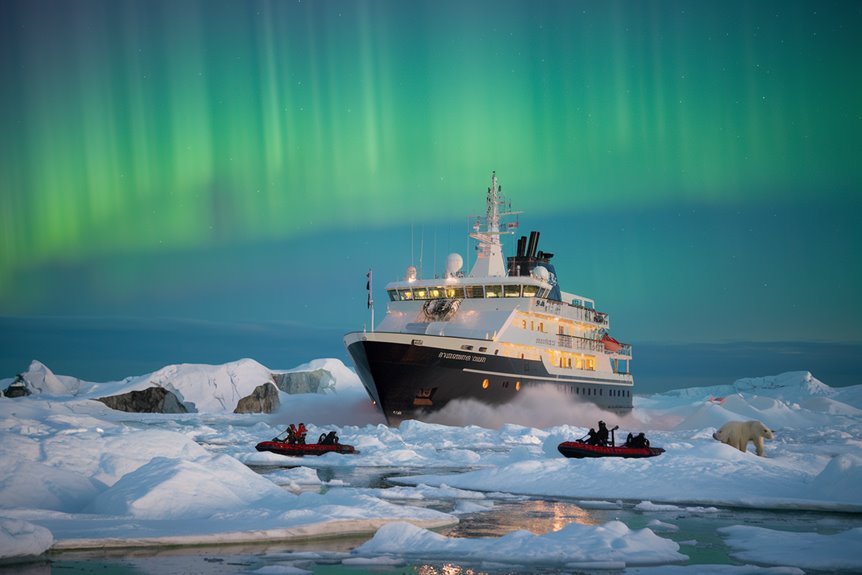
Several leading polar expedition cruise lines dominate polar cruising, each providing distinct encounters and specialised expertise.
You’ll find that Quark Expeditions and Hurtigruten lead the industry with their ice-class vessels and expert guides.
Ponant, a French luxury operator, combines exploration with elegant accommodations, while Lindblad Expeditions partners with National Geographic for enhanced scientific activities.
These operators stand out for their unique offerings:
- Silversea Expeditions delivers ultra-luxury polar journeys with butler service and gourmet dining.
- Aurora Expeditions specialises in small-group explorations and photography workshops in both poles.
- Oceanwide Expeditions focuses on active exploration with hiking, kayaking, and camping options.
When you’re choosing an operator, consider their vessel specifications, onboard expertise, and activity options that match your exploration style.
Seasonal Variations and Best Times to Visit
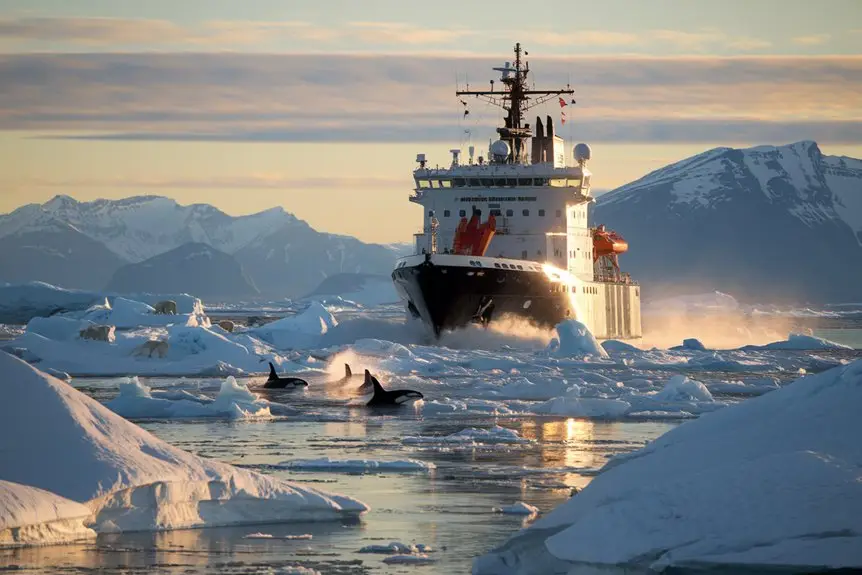
The best time to visit the polar regions depends on the season, with each offering unique highlights—choose the right months for your perfect expedition! 🌍❄️
In Antarctica, you’ll find the best conditions from November to March, with December and January providing peak wildlife viewing and up to 24 hours of daylight.
Early season brings pristine snow and active penguin courtship, whilst late season allows whale watching and penguin chick sightings.
For Arctic expeditions, you’ll want to travel between June and September.
July and August present ideal conditions for viewing polar bears, whilst June showcases spectacular ice landscapes.
September brings chances to witness the Northern Lights and autumn colours.
Ice conditions improve in late summer, allowing ships to navigate further north into the High Arctic regions.
Photography Tips for the Polar Regions
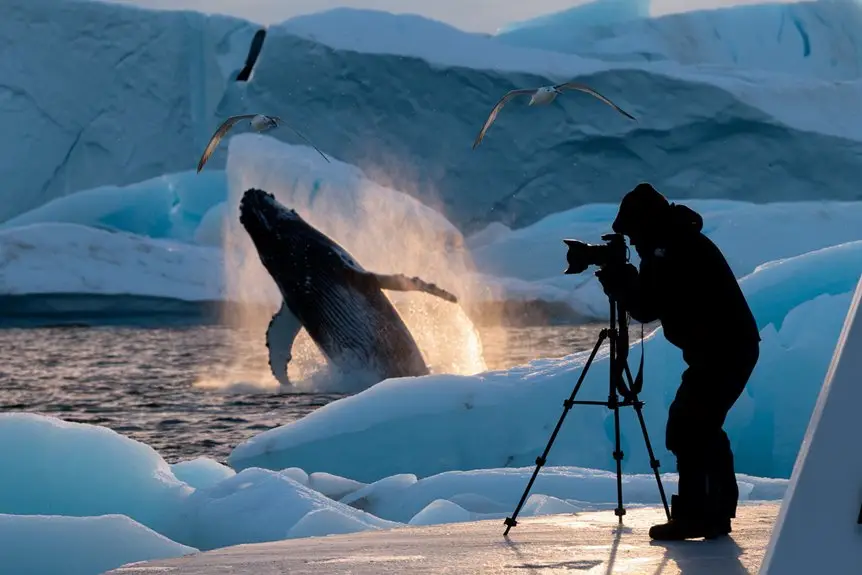
Photography in polar environments presents unique challenges and rewards, much like the seasonal timing of your voyage.
You’ll need to protect your gear from extreme cold and moisture while capturing the stark beauty of ice formations, wildlife, and dramatic landscapes.
To make the most of your polar photography opportunities:
- Pack spare batteries and keep them warm in your inner pockets, as cold temperatures drain power quickly.
- Use a polarising filter to manage glare from snow and ice, while enhancing the deep blues of glaciers and icebergs.
- Adjust your exposure compensation up by +1 to +2 stops when shooting snow scenes to prevent underexposure.
Don’t forget to weatherproof your camera and bring a microfibre cloth to wipe away condensation when moving between your ship’s warm interior and the frigid deck.
Cultural and Historical Insights

The polar regions hold a rich tapestry of human exploration, indigenous cultures, scientific revelation along with historical insights.
You’ll uncover the legacy of legendary explorers like Shackleton, Amundsen and Scott in Antarctica, whilst learning about their triumphs and tragedies.
In the Arctic, you’ll encounter the vibrant cultures of the Inuit, who’ve thrived in these harsh conditions for thousands of years.
During your expedition, you’ll visit historical sites like abandoned whaling stations and early research outposts.
Your expert guides will share tales of polar aviation pioneers, scientific breakthroughs and modern research activities.
You’ll also learn about climate change’s impact on indigenous communities and their traditional ways of life.
Understanding these cultural and historical perspectives adds meaningful depth to your polar journey.
Budgeting and Costs
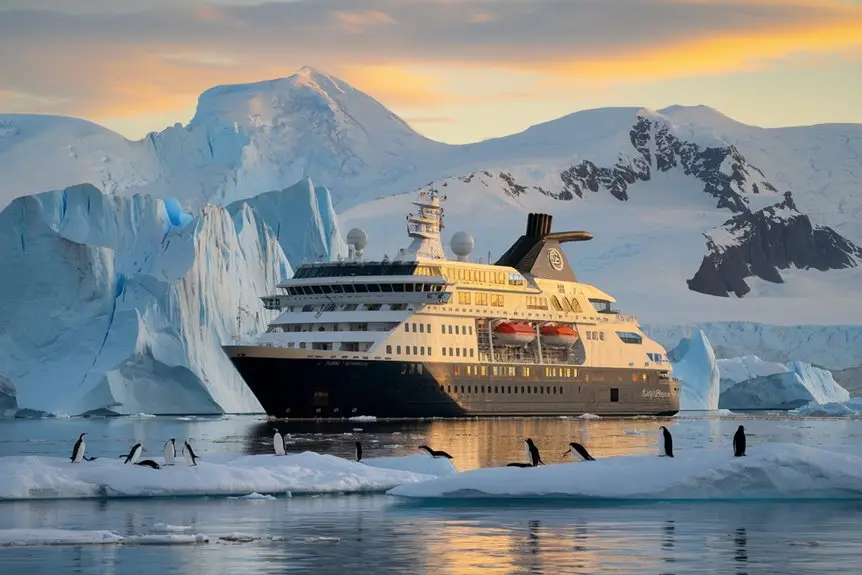
While the cultural encounters of polar expeditions are priceless, planning your voyage requires careful financial planning.
You’ll need to budget between £6,500 and £24,000 for a typical polar cruise, depending on the itinerary, cabin class, and season. Early booking discounts can save you up to 25% on your fare.
Key expenses you’ll need to assess:
- Base cruise fare, which includes meals, guided excursions, and onboard lectures
- Travel insurance with emergency evacuation coverage (£320-£650)
- Pre-cruise expenses like flights, hotels, and cold-weather gear (£1,600-£3,200)
To maximise value, book during shoulder season (early spring or late fall), choose a mid-tier cabin, and look for last-minute deals if your schedule is flexible.
Traveller Testimonials and Stories
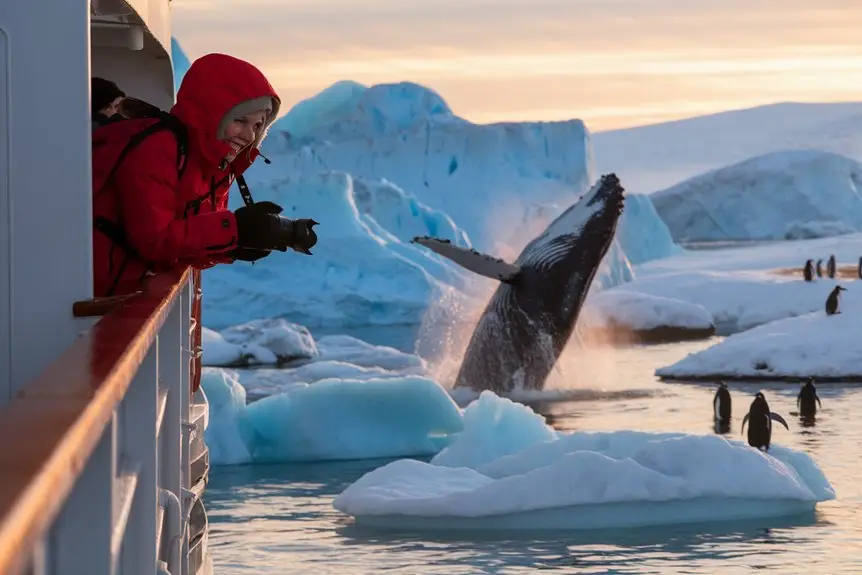
Real stories from polar explorers paint a vivid picture of life up on the frozen frontier.
You’ll hear tales of passengers witnessing massive glaciers calving into the sea, spotting polar bears hunting on ice floes, and kayaking alongside curious whales. Many travellers describe their first penguin encounter in Antarctica as life-changing, whilst others recount the surreal occurrence of sailing through midnight sun in the Arctic summer.
You’ll find countless testimonials about unexpected wildlife moments, like pods of orcas surfacing near Zodiacs or elephant seals lounging on rocky beaches.
Past cruisers often highlight the camaraderie that develops among shipmates during shared moments, from braving polar plunges to participating in citizen science projects.
These personal accounts offer authentic insights into what you can expect on your own polar voyage.
Frequently Asked Questions
Can Pregnant Women Join Polar Expedition Cruises?
You shouldn’t join polar cruises whilst pregnant due to remote locations, limited medical facilities, rough seas, and cold conditions. Many cruise operators won’t accept pregnant guests beyond 20-24 weeks.
Are There Age Restrictions for Children on Polar Expeditions?
You’ll find minimum age requirements vary by cruise operator, usually between 8-12 years old. Some ships won’t take children under 6, whilst others require teens under 16 to share cabins.
What Happens if Medical Evacuation Is Needed in Polar Regions?
Time is of the essence! If you need medical evacuation, you’ll be airlifted by helicopter to the nearest medical facility, but weather conditions can delay rescue, and costs exceed £100,000.
Do Polar Expedition Ships Have Laundry Facilities for Guests?
You’ll find onboard laundry services on most polar expedition ships. You can either use self-service facilities or pay for full-service laundry, depending on your vessel’s specific amenities.
Can Special Dietary Requirements Be Accommodated During Polar Expeditions?
Wondering about your dietary needs? You’ll be glad to know you can enjoy your expedition whilst following special diets. Most ships accommodate vegetarian, vegan, gluten-free, kosher, halal, and other dietary requirements.
🐧 Polar Cruise Enquiry 🐻❄️
Our team of polar travel specialists have personally explored both the Arctic and Antarctic regions – from tracking polar bears in Svalbard to kayaking with penguins off the Antarctic Peninsula. Let us find the right polar expedition cruise for you.
